Dec 31, 2024

Many affiliate marketers unknowingly miss opportunities by skipping link tracking.
Without it, you won’t know which content drives conversions, engagement, and sales – and risk wasting time on strategies that don’t work.
Once you start tracking your affiliate links, you’ll understand where to focus your efforts and how to improve your campaigns.
Let’s explore what link tracking is and the most effective methods to track your affiliate links and maximize your results.
- How to build a website with WordPress and what are the best plugins to use: Building a website with WordPress is an excellent choice due to its versatility, ease of use, and a vast array of plugins that enhance functionality. Here’s a comprehensive guide to building a WordPress website, along with recommendations for the best plugins.
- What does this property buzzword mean and how does it actually work? Gearing simply means borrowing money to buy an asset. Negative gearing can be a tax strategy used by investors and describes when the income (ie, the rent) made from an investment is less than the expenses it incurs, meaning it’s making a loss.
- How to Sell Your Ecommerce Business for the Best Value: Selling an ecommerce business can be a very profitable move. You can use the proceeds to invest in other projects, launch new ecommerce business websites, or even retire. For some startups, selling the business is the end goal. Whether you have a dropshipping website, sell with Amazon FBA, or own a large-scale ecommerce business, there’s an opportunity for you to sell.
- Comprehensive Guide to WordPress Website Development: Developing a WordPress website is a sequential process that requires careful planning, thoughtful execution, and consistent maintenance to ensure it meets the needs of users and achieves its intended goals. This involves a series of clearly defined stages, including planning, designing, content creation, optimisation, and ongoing maintenance.
- Top 10 High-Paying Jobs AI Won’t Replace in 2025: Artificial Intelligence (AI) is revolutionizing industries, automating repetitive tasks, and reshaping the global workforce. Despite its remarkable advancements, certain professions remain beyond AI’s capabilities due to their reliance on uniquely human traits like creativity, empathy, and critical thinking. This case study explores the 10 highest-paying, fastest-growing jobs in 2025 that AI won’t replace, delving into why these roles are indispensable and how they are evolving in an AI-driven world.
- Spill Your Guts: What To Wear To Olivia Rodrigo’s Australian Tour: Never afraid of screaming out all the dark, embarrassing things we’ve all thought before, Rodrigo sings about comparing herself to her boyfriend’s ex-girlfriend. If you want an edgy outfit that mimics the music…
- Top Social Media Plugins for WordPress to Increase Your Sites Reach and Engagement: If you are seeking to enhance your website’s reach and engagement on social media, you have come to the right place. In this article, we will delve into the premier social media plugins tailored for WordPress users. From Social Warfare to Jetpack, these plugins can facilitate seamless sharing of your content across diverse social platforms.Furthermore, we will provide recommendations to optimize your website’s visibility on social media. Keep an eye out for valuable insights!
- How to Change PuTTY’s Appearance: PuTTY is a widely-used SSH and telnet client for Windows and Linux hosting. While its default appearance is functional, you can customise it to improve aesthetics and usability. Below are the steps to modify PuTTY’s appearance, including changing the font, window size, colours, and cursor options.
- What programming languages does vBulletin use?: vBulletin was orginally written in perl and used a flat file database system. However, as sites grew they notice that sites could not cope with a large amounts of traffic. This problem has now been fully rectified when vBulletin was converted to php and a mysql database system.
What is affiliate link tracking?
Affiliate link tracking shows you when visitors click your promotional links and complete desired actions, such as purchases or sign-ups.
It reveals which marketing efforts drive conversions and lets you measure the success of your affiliate campaigns across different channels – from your website to paid campaigns.
Affiliate tracking uses three main components that work together:
- Cookies save a small file on visitors’ devices after they click your link. These help identify if someone returns later to make a purchase.
- Tracking parameters like UTM (Urchin Tracking Module) are special tags added to your links. They show whether traffic came from blog posts, social media updates, or email newsletters.
- Conversion pixels are code snippets, typically embedded on a thank you or confirmation page, that record when someone takes a desired action, linking clicks to sales or other conversion events.
Different tracking methods use different combinations of these components, and you can choose the best option for your needs.
How to track affiliate link performance: 4 key methods
Now that you understand how affiliate tracking works, let’s look at the practical ways to implement it.
There are four key methods for managing and analyzing your affiliate links – from using WordPress plugins to leveraging various tracking tools.
We’ll start with WordPress-specific methods and then explore other tracking solutions that work on any platform.
1. Using link cloaking plugins
Link cloaking turns long, complex affiliate links into clean, simple URLs.
For example, instead of sharing something like example.com/recommends/B07Y8YWTB1/ref=your123?tag=affiliate&campaign=summer, you can create a shorter link like example.com/deals/headphones.
This way, your links look more trustworthy to visitors and are easier to manage.
Additionally, cloaked links help you:
- Encourage higher engagement by avoiding long, messy URLs
- Facilitate detailed monitoring of link performance
- Simplify campaign management by organizing links per campaign or channel
- Switch affiliate programs without updating links across your site
- Protect your commissions from being blocked by ad blockers
- Dynamically redirect links based on various factors such as user location, device type, or time
There are two popular WordPress plugins you can use for link cloaking:
PrettyLinks

With features like click tracking for monitoring click statistics, referral sources, and geographic data, multiple redirection types, and bulk link creation, Pretty Links makes managing numerous affiliate and promotional links effortless.
Additionally, Pretty Links integrates with tools such as Google Analytics and email marketing services, providing valuable insights into your campaign performance. It protects your affiliate links from hijacking and includes A/B testing capabilities to optimize your marketing strategies.
ThirstyAffiliates
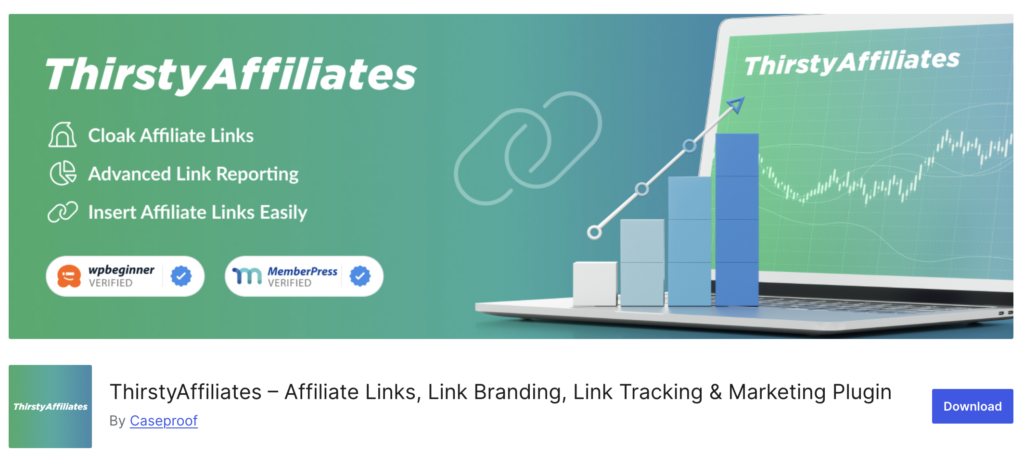
This plugin helps you manage your affiliate links through a dedicated dashboard. You can organize links into categories and quickly insert them while writing posts using the editor button.
The free version includes basic link management, while the pro version adds features like automatic keyword linking, Amazon API importing, automatic link health checker, and country-specific redirects.
2. Using UTM parameters
While link cloaking plugins provide basic click tracking, UTM parameters let you gather more detailed data about your traffic sources.
You can use them to find out where your external traffic comes from by adding tags to your links.
Instead of just seeing that someone clicked your link, you’ll know if they came from your Instagram bio, your latest blog post, or your email newsletter.
For example, let’s say you have this affiliate link: example.com/recommends/headphones
To track it with UTM parameters, you’d add: example.com/recommends/headphones?utm_source=instagram&utm_medium=bio&utm_campaign=blackfriday
Each part tells you something specific:
utm_source=instagramshows the platformutm_medium=bio tells you where on Instagramutm_campaign=blackfridayshowcases the specific promotion campaign
To create tracked links, use Google’s free Campaign URL Builder.
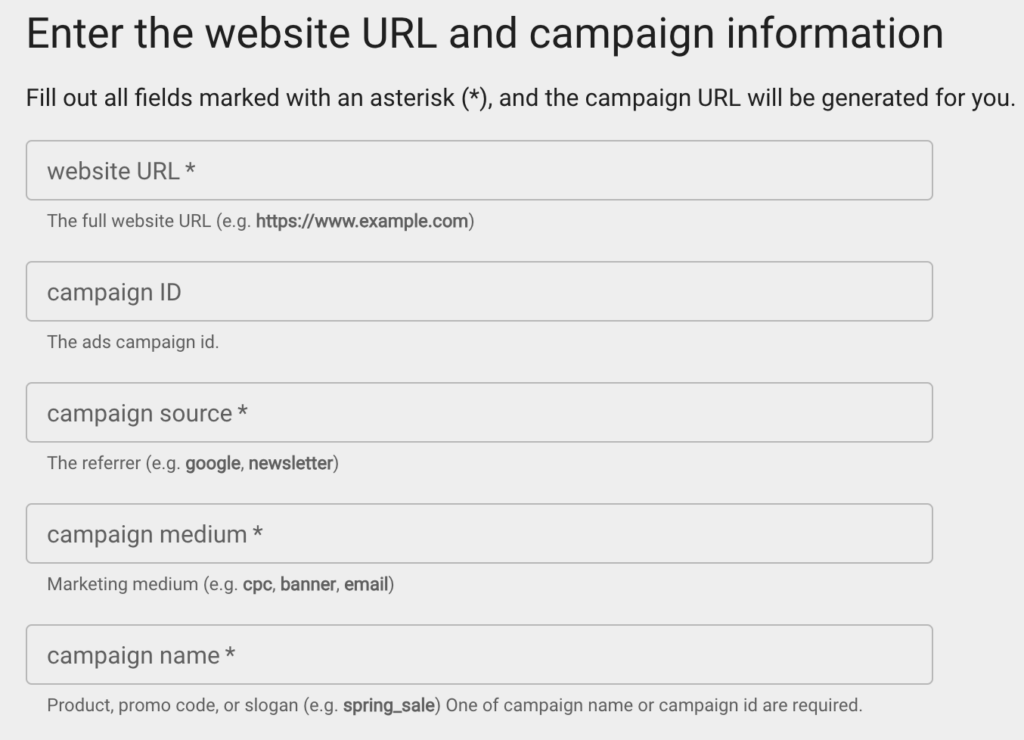
Paste your affiliate link and add these parameters:
- Under Campaign source, enter where you’ll share the link, e.g., Instagram, blog
- Under Campaign medium, add how you’ll share it, e.g., bio, post, story
- Under Campaign name, write your promotion name, e.g., Black Friday campaign
Remember: UTM parameters are case-sensitive, so stick to lowercase letters and keep your naming consistent.
Next, you can track the results once your links are set up.
The easiest way is to use Google Analytics (GA4). Head to Reports → Life Cycle → Acquisition → Traffic acquisition.
In the first column, change the “Session default channel group” to “Session source/medium” to see all custom UTM sources and mediums as you defined them.
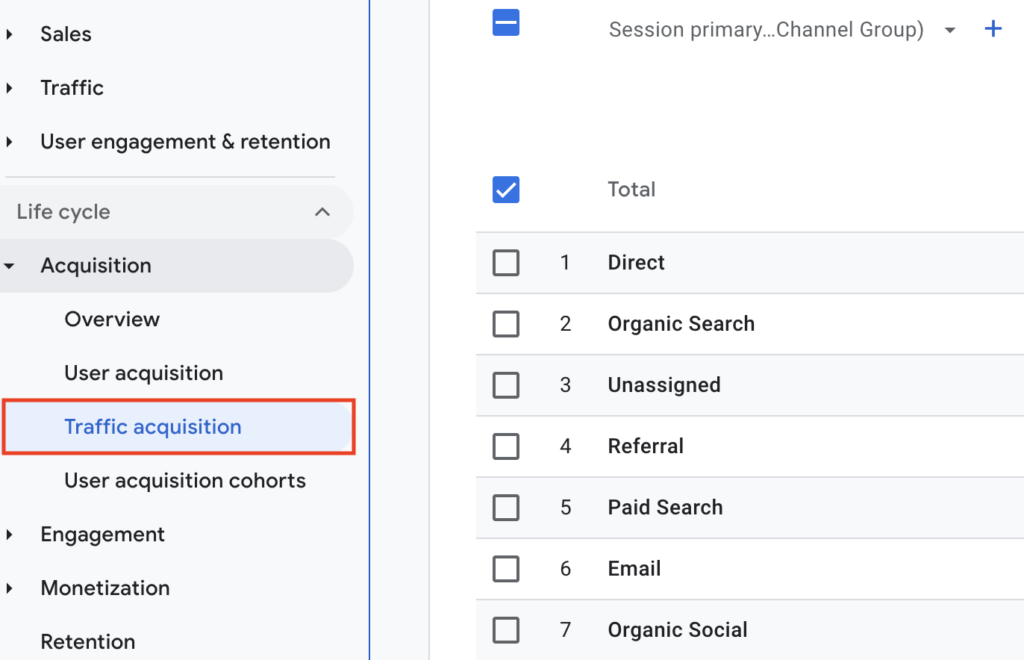
From here, you can analyze which platforms and channels generate the most clicks, engagement, and conversions.
3. Tracking link performance in Google Analytics
While UTM parameters help monitor links shared on external channels like social media, you should also track clicks on affiliate links within your website.
Google Analytics 4 makes this possible through Enhanced Measurement, a feature that allows you to monitor all outbound clicks, including your affiliate links.
Let’s see how you can set it up.
Step 1: Enable Enhanced Measurement
Log into your Google Analytics account and navigate to the Admin section.
In the Property column, click on Data Streams and select your website’s data stream. Look for the data stream that matches your website’s domain name and click on it to select it.
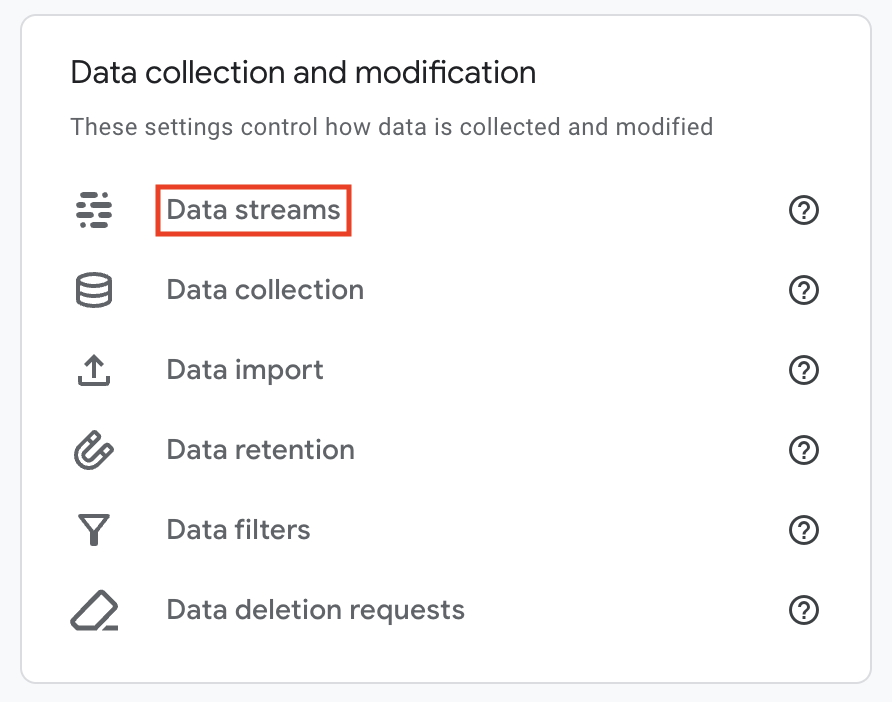
Once you’re in the data stream settings, click the gear icon next to Enhanced Measurement, and make sure that the Outbound Clicks option is turned on.

This setting enables GA4 to automatically track whenever someone clicks on a link that leads to another website.
Step 2: Create a custom event for affiliate clicks
Next, create a custom event specifically designed to track affiliate link clicks.
In the Admin section, go to Events and click on Create Event. You can name your event as “affiliate_click.”

To configure this event, set two conditions:
- The event name must equal “click”
- The link URL must contain your affiliate domain (the website you’re promoting)
You should also check the box labeled ‘Copy parameters from source event’. This ensures that important details about each click are retained for further analysis.
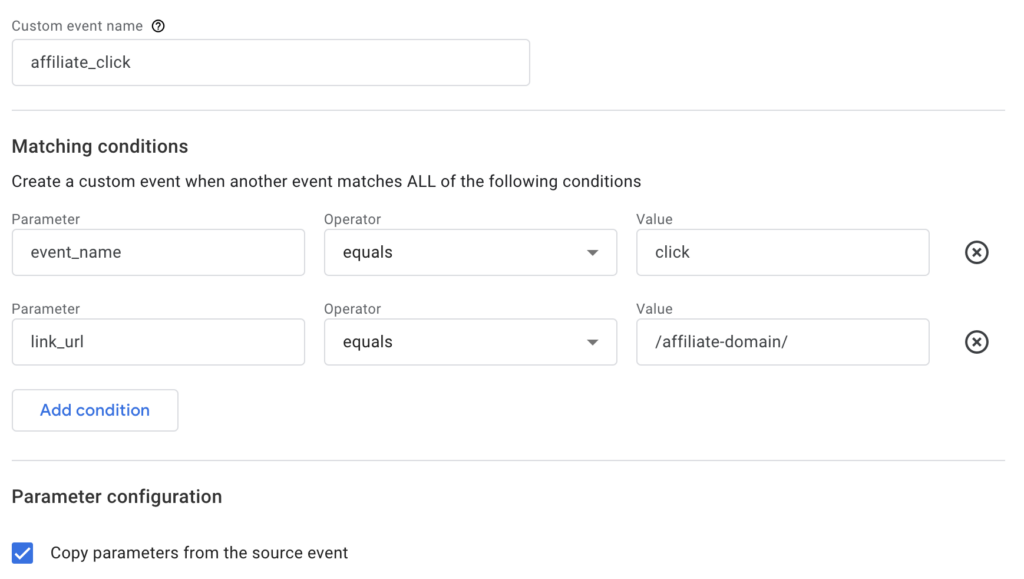
Pro tip:
If you’re working with several affiliate programs, you can track them all at once by entering multiple domains in the Link URL condition.
Use the pipe symbol (|) to separate each domain. For instance, you could input: amazon.com|etsy.com|partner.com.
Step 3: Track your results
After setting up your custom event, you can check how your affiliate links are performing.
Navigate back to the Reports section of GA4.
Go to Life Cycle → Engagement → Events, where you will find your “affiliate_click” event listed.
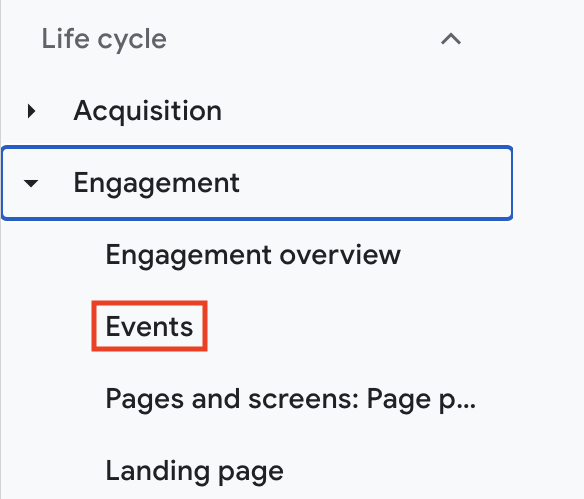
Here, you can view metrics such as total clicks and unique users who interacted with your affiliate links.
Alternatively, use GA4’s Explore Reports feature to get deeper insights into your affiliate link performance.
Click on Explore in the left-hand menu and select Blank to start a new exploration report.

In this report:
- Add dimensions like Event name, Page path, and Date
- Include metrics such as Event count, Event value, Engagement rate, and Total users
To visualize your data, drag the Event name dimension into the Rows section and place the Event count (and other metrics you want to track) into Values.
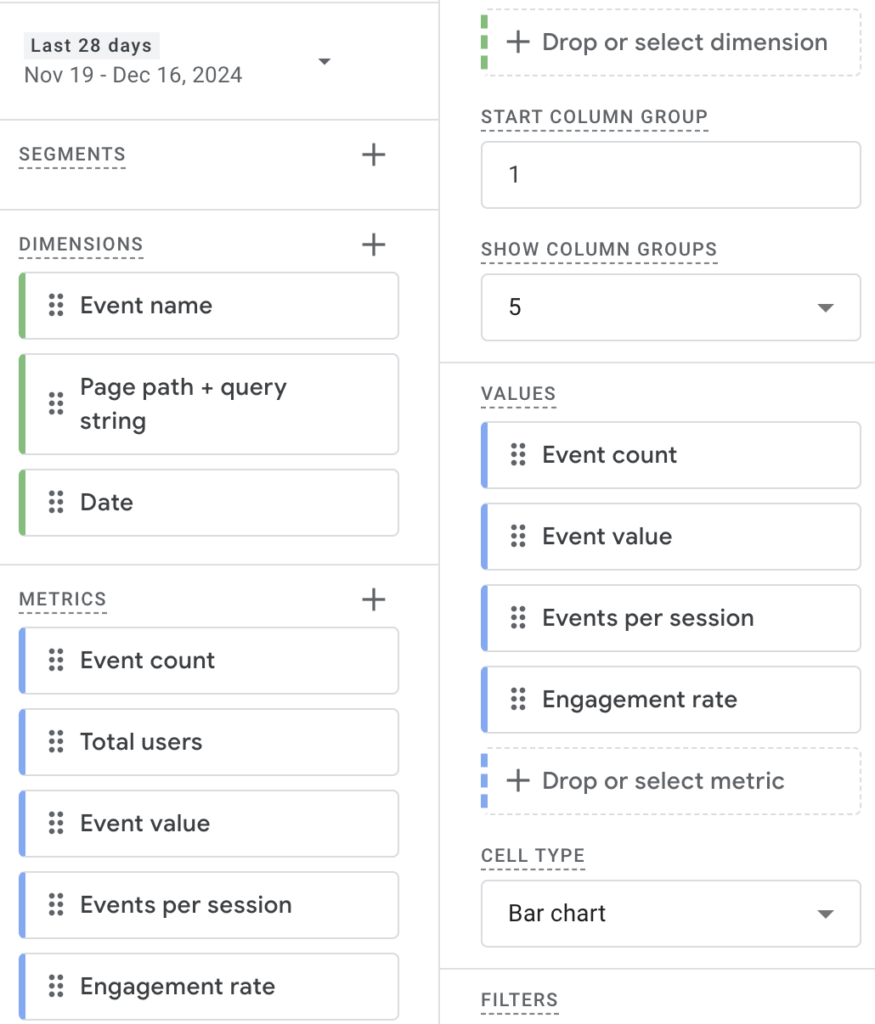
Finally, filter this report specifically for your “affiliate_click” event to focus solely on those interactions.
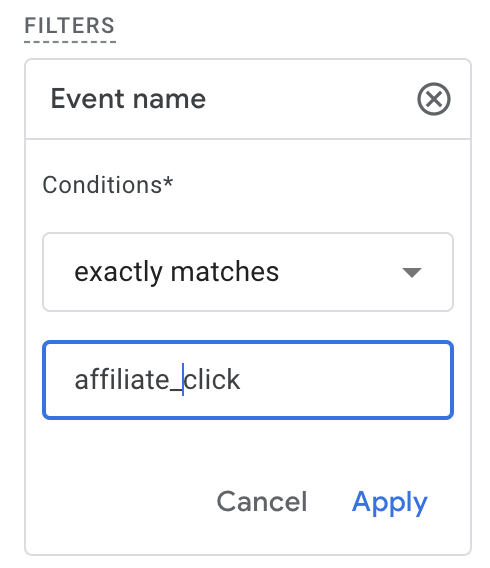
You can also break down the data further by adding segments or additional dimensions as needed.
This will help you understand which pages generate the most clicks and how different traffic sources contribute to your affiliate link performance.
4. Using dedicated affiliate tracking tools
As your affiliate marketing grows, you’ll want to know more than just where your clicks come from.
For example, you’ll need to identify your most profitable paid campaigns, test different affiliate networks against each other, or protect yourself from fake clicks eating up your budget.
Luckily, there are specialized affiliate tracking tools that can help you out. Here are some of the top options you can try:
Refersion

Refersion for affiliates is a centralized platform where you can track all your affiliate partnerships in one dashboard. The platform provides:
- Real-time conversion tracking for all your promotional links
- Detailed reports showing which creatives and products perform best
- Ability to create custom tracking links for specific pages
- Performance tracking through both affiliate links and coupon codes
This tool is great for affiliates working with multiple brands who want to manage and track all their promotions in one place.
Voluum

Voluum is a cloud-based tracking platform that helps affiliates monitor their ad campaigns. The platform provides:
- Real-time tracking for traffic from multiple sources like Google Ads and Instagram
- Support for different ad types like native ads, social media, and push notifications
- Built-in trend analysis to spot profitable patterns
- Anti-fraud protection to detect and block suspicious traffic
This tool works best for affiliates running paid ad campaigns who want to track and optimize their performance across multiple platforms.
ClickMagick
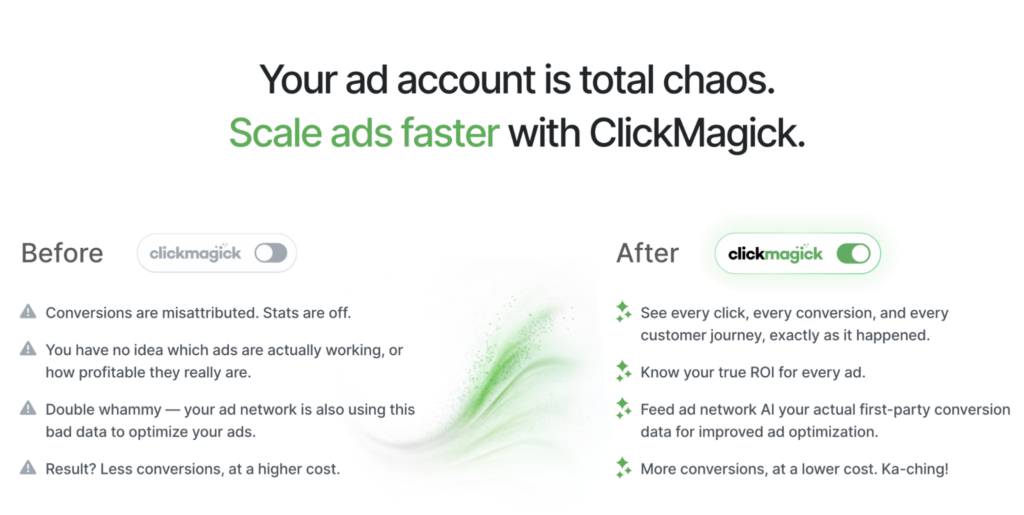
ClickMagick is an advanced tracking platform that helps affiliates analyze their campaigns. The platform provides:
- Real-time tracking for clicks, conversions, and user journeys
- Advanced attribution models to analyze performance beyond last-click data
- Cross-device tracking to capture every interaction, even as users switch devices
- Bot filtering and fraud protection to ensure clean, actionable stats
Choose this tool if you want to optimize your campaigns and scale your efforts while protecting your budget from click fraud.
Benefits of tracking affiliate links
Tracking affiliate links can help you achieve better results and build an effective strategy. It also provides you with access to real data to guide your decisions.
For example, you’ll know which content and campaigns generate engagement and conversions. You will also be able to use this knowledge to optimize your efforts and generate more earnings.
Here’s what link tracking helps you achieve:
- Know which content drives the most sales. You’ll access precise data about which pages actually convert visitors into customers.
- Spot your best traffic sources. Knowing which channels and platforms bring traffic and conversions helps you build a strong long-term strategy.
- Optimize your paid campaigns. Understanding which ad campaigns perform best helps you manage ad budgets effectively.
- Protect your commissions. Link cloaking and fraud protection help prevent ad blockers from stripping your affiliate IDs and bots from generating fake clicks.
- Make data-driven improvements. Instead of randomly testing new strategies, you’ll have concrete data to guide your content and promotional decisions.
Get better results with affiliate link tracking
Tracking your affiliate links helps you reach your goals faster – whether you’re growing traffic or generating sales.
Here’s how you can approach it:
- Start with WordPress plugins to manage and monitor your links.
- Add UTM parameters to understand traffic sources and set up GA4 tracking for detailed insights.
- As your promotional efforts scale up, try dedicated tracking platforms that offer advanced features like fraud protection and multi-channel tracking.
Remember, you don’t need to wait for the perfect setup. Choose one method that matches your current needs and start tracking right away.
Even basic click data will help you make better decisions about what content to create and where to promote your affiliate links.
How to track affiliate links FAQ
How do I know if my affiliate link is working?
You can test it by clicking your link and checking if it redirects to the correct product page with your affiliate ID visible in the URL. You can also use link-cloaking plugins or tracking tools (like Pretty Links or Google Analytics) to monitor if clicks are being recorded. Finally, check your affiliate dashboard regularly to confirm that sales are being properly attributed to your account.
Is tracking affiliate links still relevant?
Tracking affiliate links is more relevant than ever. Proper tracking helps verify your links work correctly and protect your earnings – especially with increasing privacy measures and ad blockers threatening commission attribution. It also provides essential data to help improve your strategy.
What is the best affiliate tracking tool?
The choice of the affiliate marketing tool for tracking depends on your needs. If you run a WordPress site, plugins like PrettyLinks offer simple tracking. For multiple campaigns across different channels, consider advanced platforms like Voluum or ClickMagick. For deep traffic insights, use UTMs and Google Analytics 4’s event tracking.






